Educating Bartenders Worldwide.
By Beverage Trade Network
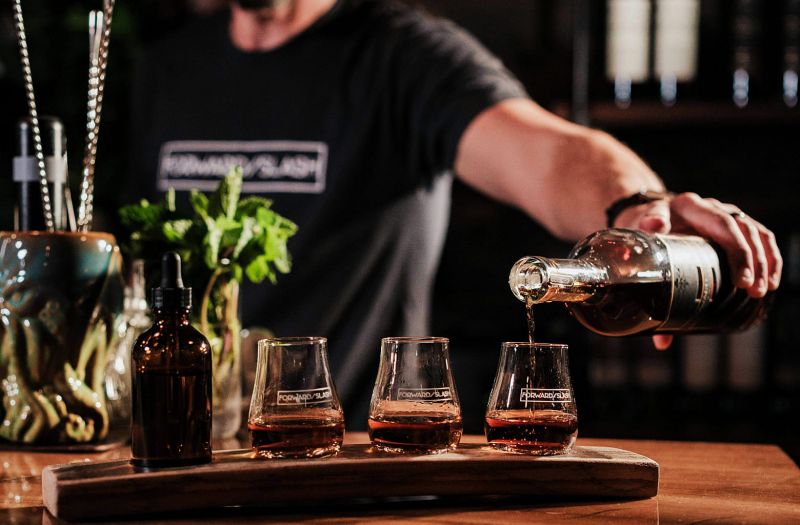
When you step into a bar or restaurant, you may notice the variety of glassware used for serving different spirits and cocktails. Whether it’s a whiskey in a classic tumbler, champagne in a flute, or a martini in a delicate V-shaped glass, the glassware plays a significant role in how each drink looks, smells, and tastes. This article will explore why different spirits and cocktails use specific glass types, highlighting the science and artistry behind each choice.
Aroma is a vital part of the drinking experience, majorly influencing how we perceive flavors of what we taste. Different glasses are designed to enhance or concentrate the aroma of specific spirits and cocktails, creating a more enjoyable and immersive drinking experience.
These glasses, often used for whiskey, brandy, and cognac, have a narrow top that funnels aromas to the nose, while the wider base allows the drink to breathe. This design is perfect for spirits where aroma plays a significant role, helping drinkers appreciate the nuanced scents of aged whiskey or cognac.
Used primarily for champagne and sparkling wine, flute glasses have a tall, narrow shape that preserves carbonation. The small surface area at the top prevents bubbles from dissipating quickly, keeping the drink lively while concentrating the delicate, fruity, and floral aromas.
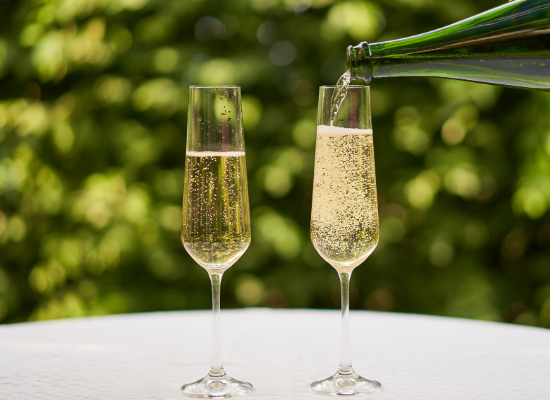
In Image: Flute Glass (sourced from Adobe Stock Images)
The temperature at which a drink is served can make a noticeable difference in flavor. Glass thickness, in particular, affects how quickly a drink warms up or stays cool.
This short, thick glass is often used for whiskey or cocktails served on ice, such as an Old Fashioned or Negroni. The thick walls insulate the drink, keeping it cold longer, while the wide mouth allows the drinker to savor the aroma and taste. Its wide design is also practical for drinks served with larger ice cubes, which melt more slowly, keeping the drink chilled without diluting it quickly.
Known for its iconic V-shape, the martini glass helps keep the drink cold due to its thin stem, which allows the drinker to hold the glass without warming the contents. Its wide bowl allows the drinker to sip slowly, while the shape helps maintain the clarity and crispness of the spirit-forward cocktail.
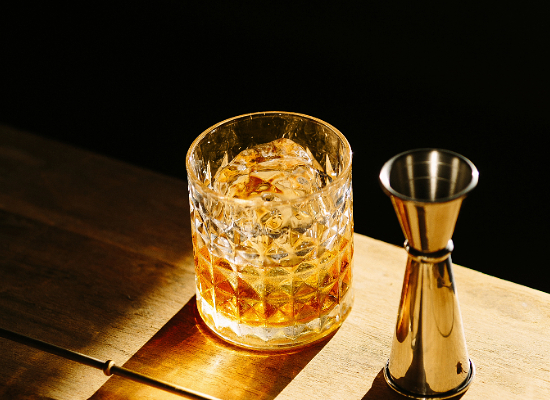
In Image: Old Fashioned Glass (sourced from Adobe Stock Images)
The visual appeal of a cocktail is often as important as its taste, as the presentation can create anticipation and enhance the drinking experience. Different glass shapes and designs highlight the unique characteristics of each cocktail.
This elegant glass is often used for champagne and classic cocktails, such as the Sidecar or French 75. With a wide, shallow bowl, the coupe glass is perfect for visually appealing cocktails with garnishes, making it a go-to for sophisticated presentations.
Used for cocktails with mixers, like a Gin and Tonic or Mojito, the highball glass is tall and straight, emphasizing the layered look of drinks with different densities. The shape also encourages a good balance between the spirit and the mixer, making for a well-proportioned, refreshing drink.
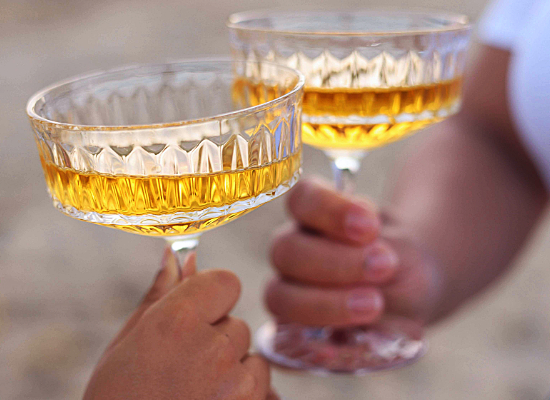
In Image: Coupe Glass (sourced from Pexel)
[[relatedPurchasesItems-31]]
Glass shape can impact how a drink’s flavors are perceived, especially when it comes to where the liquid hits the palate. Different glasses are crafted to enhance specific taste experiences.
Wine glasses are often tailored to specific varietals, with the bowl size and shape enhancing certain aspects of each type of wine. For instance, Bordeaux glasses are taller with a wider bowl, ideal for directing red wine to the back of the mouth, which enhances the rich, bold flavors. Meanwhile, Burgundy glasses have a wider bowl to capture the nuanced aromas of lighter wines like Pinot Noir.
A staple for high-proof spirits like tequila, vodka, or whiskey, shot glasses are designed for quick consumption. Their small size doesn’t allow for much aeration, preserving the potent, unaltered flavor of the spirit. Though minimal in design, shot glasses provide a direct experience of the spirit’s strength and purity.

In Image: Wine Glass (sourced from Adobe Stock Images)
The use of specific glassware has deep historical and cultural roots, often shaping how we experience particular drinks today.
Exotic, colorful, and often served in ceramic or novelty glasses, tiki cocktails such as the Mai Tai or Zombie gained popularity in mid-20th-century America. Tiki glasses and mugs enhance the fun, escapist appeal of these drinks, transporting the drinker to an imagined tropical paradise. The unique glassware is part of the tiki culture, enhancing the overall experience.
In Mexico, tequila and mezcal are often served in copita or snifter glasses, which allow the drinker to savor the earthy, smoky aromas of these spirits. This type of glass is designed to highlight the rich flavors and aromas, encouraging a slower, more contemplative drinking experience than a shot glass would.
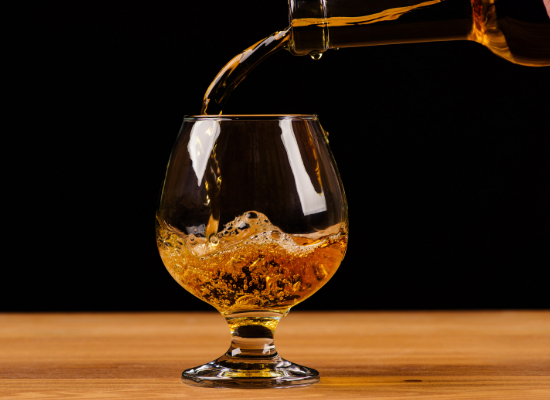
In Image: Snifter Glass (sourced from Adobe Stock Images)
In a bustling bar or restaurant, practical considerations also influence glass choices. Certain glasses are better suited to specific drinks based on their size, weight, and ease of handling.
Similar to the highball but slightly narrower and taller, the Collins glass is ideal for cocktails like the Tom Collins or Singapore Sling. The shape is both functional and visually appealing, offering plenty of room for ice, mixers, and garnishes, while also being easy to handle.
Traditionally made of copper, the Moscow Mule mug is an iconic choice for this refreshing cocktail. The copper keeps the drink colder for longer and adds a unique tactile element. It’s also a practical choice for high-volume bars, as the handle allows servers to easily carry multiple mugs.
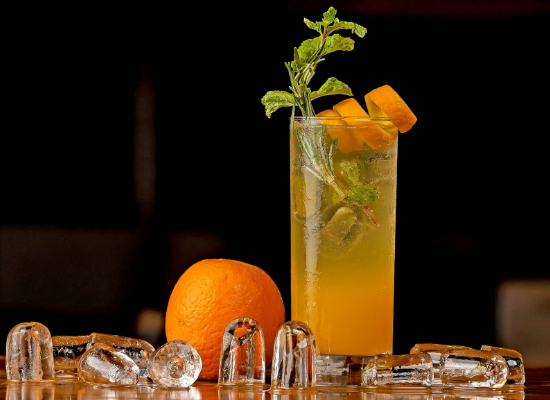
In Image: Collins Glass (sourced from Pexel)
The choice of glassware in serving spirits and cocktails is more than just tradition—it’s an art form that considers aroma, taste, temperature, and visual appeal. From the tulip shape of a nosing glass to the copper mug of a Moscow Mule, each glass is carefully chosen to enhance the experience of the drink it holds. So next time you enjoy your favorite cocktail, take a moment to appreciate the glass—it’s as much a part of the drink as the ingredients themselves.
Header image sourced from Pexels.
Related Links:
Asian Cocktails: A Lasting Trend or a Passing Fad?
A Chat With The ‘Hands On’ Master Blender Ron Welsh.